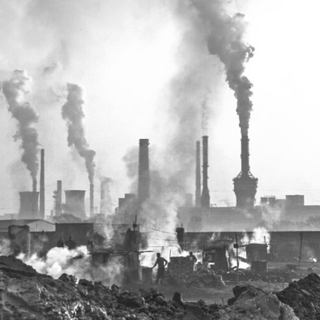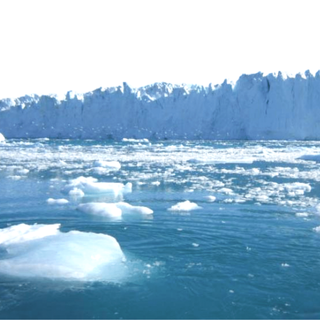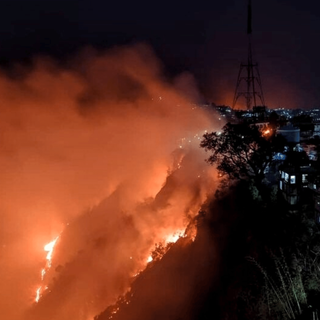
Goa Rail Expansion Will Destroy the “Fragile Ecosystem” in Western Ghats, SC Panel Says
The central government cleared the industrial projects last year despite concerns of damaging biodiversity hotspots.

A railway expansion project in the Western Ghats, which was cleared by the central government last year, will wreak havoc on a “fragile eco-system,” a panel appointed by the Supreme Court said in a report, according to The Indian Express.
The proposed plan aims to double the railway track from Castle Rock, in Karnataka, to Kulem, in Goa, cutting through biodiversity hotspots such as the Bhagwan Mahaveer Wildlife Sanctuary (BMWS) and the Mollem National Park (MNP) in South Goa. The Central Empowerment Committee (CEC), constituted by the Supreme Court in 2002, objected to the expansion and noted the project “will destroy the fragile eco-system of the Western Ghats which is an internationally recognized biodiversity hotspot and also one of the most important wildlife corridors of the country.” The official red flag echoes the concerns aired by the Save Mollem campaign last year, which rallied against habitat destruction from the railway.
The rail project was approved in 2011, with the purpose of improving the handling capacity of the track for carrying iron, iron ore, and steel to Mormugao Port for export, and carrying back imported coal, the Asian Development Bank noted in a 2009 report. Currently, there are three projects, including the rail expansion, proposed in the ecologically sensitive area: one relating to an additional four-lane highway expansion, and the other a proposed 400KV electricity transmission line through Goa, both of which were fast-tracked by the Ministry of Environment, Forest and Climate Change in April last year.
Related on The Swaddle:
Centre Approves Razing 140 Hectares of Goan Forest for Railway Project
Critics and environmental activists have strongly objected to the initiative citing the damage to the ecosystem and the insufficient measures to protect wildlife around the Western Ghats. “The treble threat targets 250 hectares of old-growth forests, including some 60,000 trees, all of which are integral to one of only 36 surviving biodiversity hotspots in the world,” Vivek Menezes reported in Livemint. “They are home to tigers and gaur, and at least 70 other species of mammals, as well as 235 species of birds. This is the watershed of Goa as well as the ultimate guarantor of its food security.”
The increased number of trains and wider openings will fragment the habitat, experts worry, and make the movement of wildlife across the railway line dangerous. Moreover, the dense Western Ghat forests support thousands of indigenous people, in addition to flora and fauna. Environmentalists also note the related deforestation and encroaching on biodiversity hotspots increases the potential risk for future pandemics and epidemics. Research shows habitat destruction can lead to the spread of zoonotic viruses from animals to humans.
The Save Mollem campaign, which sprung swiftly across Goa in December last year, was a cumulative response to these threats. Thousands protested the lack of assessment impact of the projects and the disregard for ecological integrity. “Despite the ecological and socio-economic destruction this project will bring to the state, the irony is that the people who are constitutionally elected to safeguard the fabric of our environment are the same group of people who are giving said clearances amid the groundswell opposition…,” Captain Viriato Fernandes, convenor of Goencho Avaaz, a local NGO opposing the clearance, told The Indian Express last year.
The CEC’s objections come in response to a petition filed by the Goa Foundation, and the panel recommended the permission granted for the rail expansion project should be revoked. It also suggested modifications to the electricity transmission line and highway expansion projects to protect forest cover and mitigate damage. “The project will only be marginally enhancing the capacity of the most inefficient section of the Railway Network passing through ecologically sensitive and bio-diversity rich Tiger Reserve, Two Wildlife Sanctuaries and a National Park,” the CEC noted in its 110-page report.
The railway doubling project was cleared by the Standing Committee of National Board of Wildlife (NBWL), a committee under the Union Environmental Ministry, this year, despite similar objections by experts. The NBWL was advised against giving clearance — with experts noting the importance of first doing a detailed study in mitigation measures, a cost-benefit analysis of such projects, and the total environmental impact. The NBWL green-lit the industrial projects despite these concerns, according to Down to Earth.
Similarly, in July last year, the NBWL said the projects were approved in consultation with the Goa State Wild Life Board. But members of the state board countered this to say they made no recommendations and the mitigation measures currently in place to protect the Western Ghats were “unscientific,” The Indian Express reported at the time.
The tussle between environmental conservation and industrial expansion is as old as modern civilization, and historically, it is the former that is willed into suppression. The resistance within and outside Goa — which mobilized thousands of young people, who took to streets to protest and ran social media awareness campaigns — echoes the cultural and environmental cost to such projects, which indubitably outweighs the proposed benefits.
“Losing the battle would definitely not be a failure of the campaign, but instead just a clear indication that we are up against a very corrupt system,” a 28-year-old activist told Livemint. “We know that the fight for Mollem is an indicator of the larger fight we will continue to face, not of a development vs environment paradigm, but the need for good policy triumphing over bad.”
Saumya Kalia is an Associate Editor at The Swaddle. Her journalism and writing explore issues of social justice, digital sub-cultures, media ecosystem, literature, and memory as they cut across socio-cultural periods. You can reach her at @Saumya_Kalia.
Related


North and South Poles Are Shifting to New Locations as Glacial Ice Melts: Study
